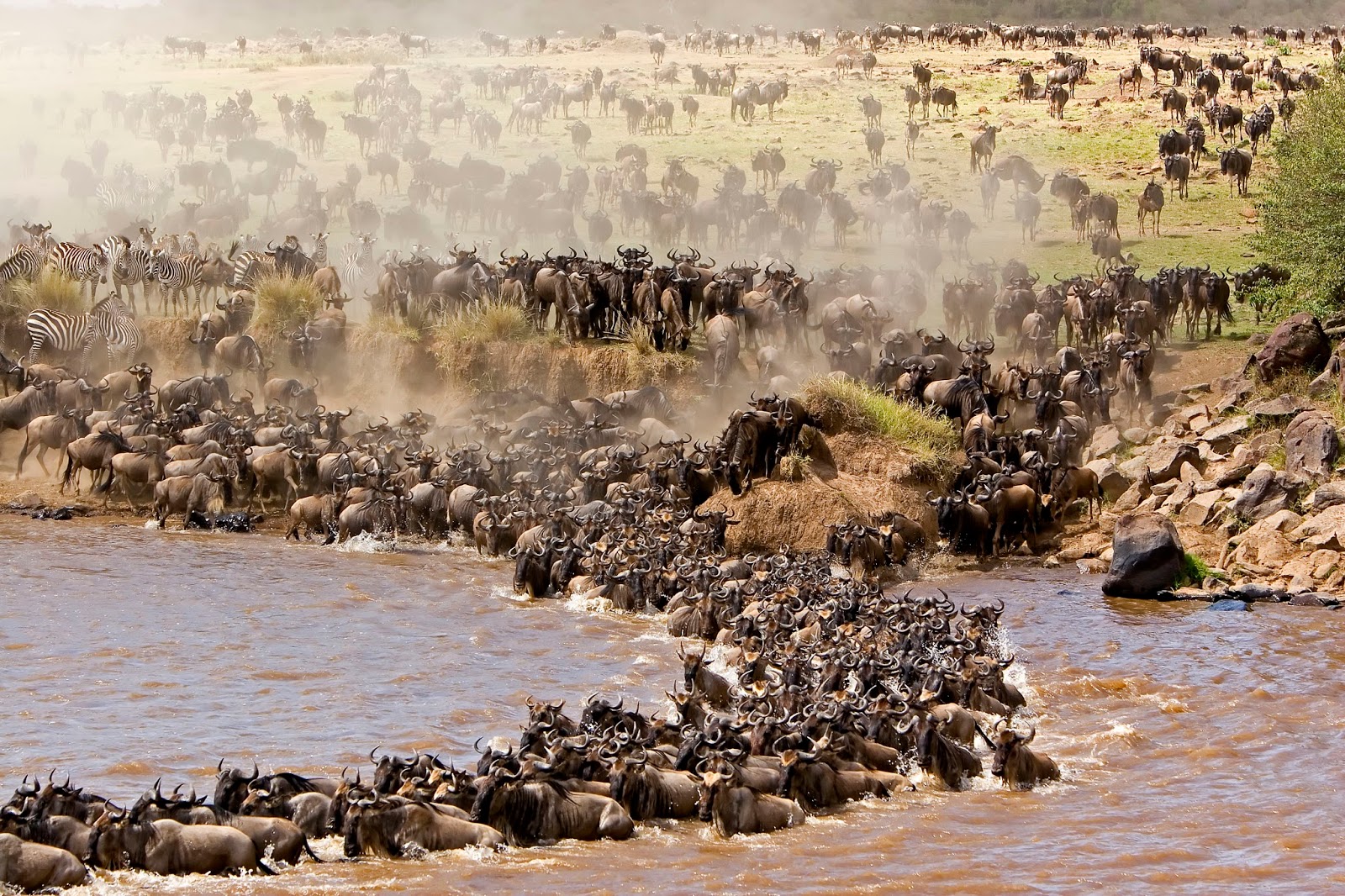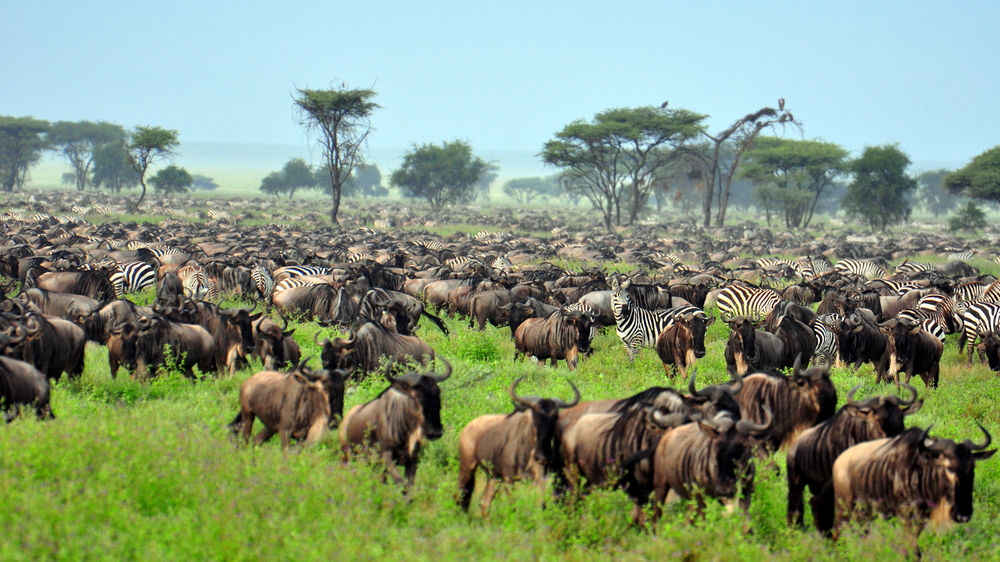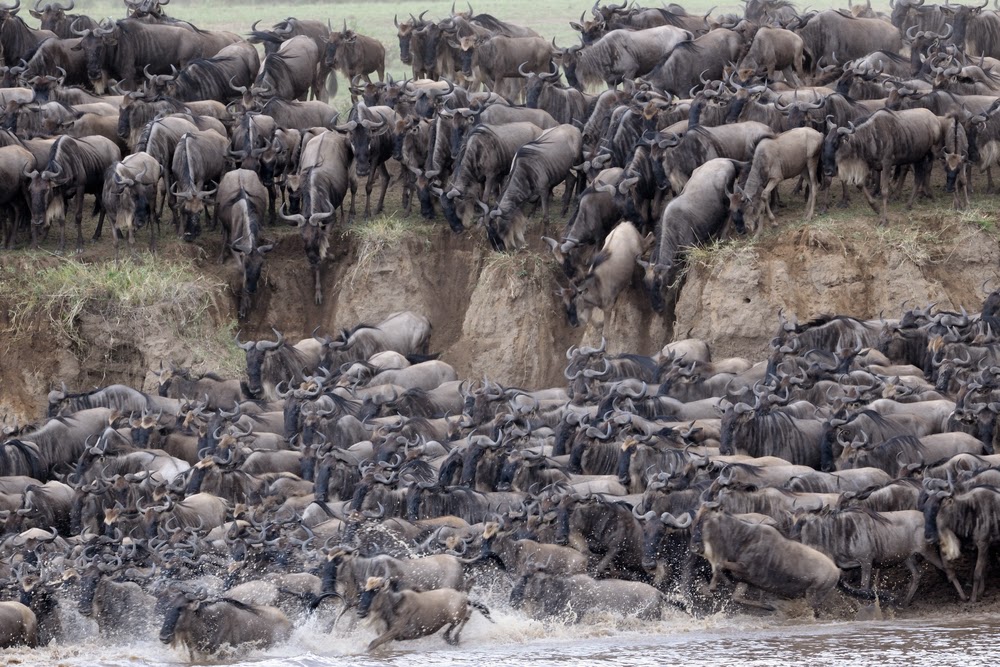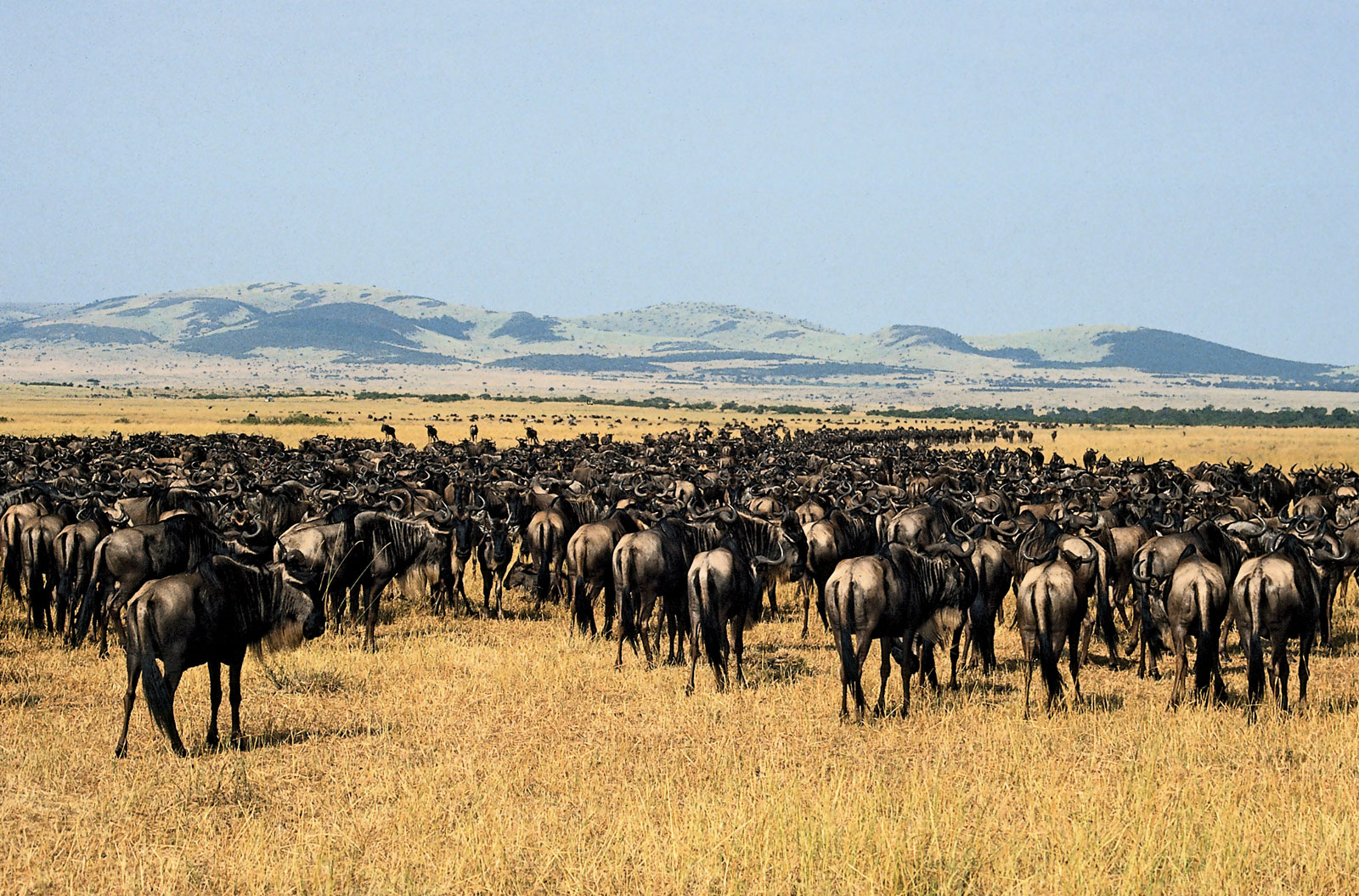The journey for the key players in the Great Migration, the roughly 1.5 million wildebeest, starts in the south of the Serengeti, with the birth of half a million calves between January and March. A favourite season for many of the seasoned Serengeti guides: the air during these months is full of new life and action.

Predators like lions and hyenas are constantly hunting for babies, and thousands and thousands of calves are born within a couple weeks of each other – a feast for the eyes of true wildlife enthusiasts.

When the drought comes in May, the herd moves north, to the Maasai Mara, chomping down the high green grass, quickly followed by the gazelles and zebras. The migration is not without risk: crossing rivers means facing about 3,000 crocodiles, patiently waiting for a kill.

Not to mention the famous Serengeti lion population: by far the largest in Africa. Despite the abundance of hoofed meat in this area, life is not easy for these big cats in this unforgiving landscape. But seeing a group of lions collaborating to hunt down a wildebeest is an unforgettable sight.

Then, with the beginning of the short rains in late October, the migration makes its way back into the Serengeti.

By December, the herds trek past Seronera – a small settlement in central Serengeti where the official Serengeti Visitors’ Centre is located – to return to their calving grounds again, and the circle is complete.
According to serengeti.com











